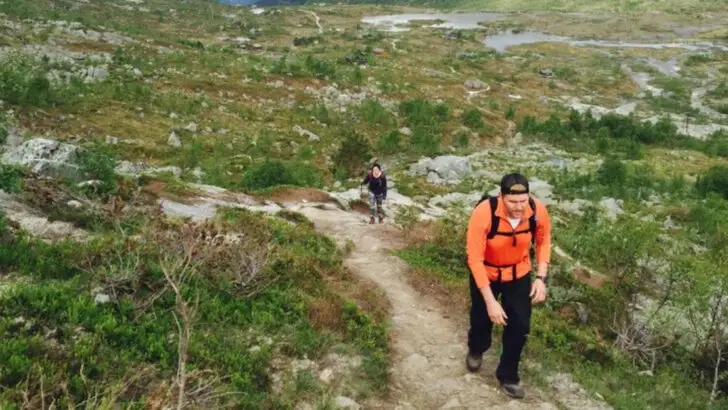You can be in the best shape of your life and still get wrecked by Mount Whitney. At 14,505 feet, this beast is the highest peak in the lower 48—and it doesn’t care how many half-marathons you’ve run. The air gets thin, the sun burns hotter, and those infamous 99 switchbacks will break your spirit if you’re not ready. Most first-timers think it’s just a really long hike. Wrong. This is a full-day endurance test wrapped in altitude, exhaustion, and weather that turns on a dime. Miss one crucial detail—start time, gear, water, pacing—and your summit dreams can vanish by mile eight. If you’re planning your first Whitney attempt, don’t wing it. Read this list, learn from others’ misery, and hike smart—because the mountain isn’t forgiving, but it is unforgettable.
Underestimating Altitude Sickness
Many rookie hikers start strong but crash hard as they reach elevations around 12,000 feet. The thin air at such altitudes can cause debilitating headaches, nausea, and dizziness. Proper acclimatization is crucial—even for the physically fit.
Ignoring altitude sickness signs can lead to serious health risks. Spending a day or two at higher altitudes before the big hike can help your body adjust.
Altitude affects everyone differently, so even seasoned athletes aren’t immune. Knowing your limits and recognizing symptoms early can prevent an enjoyable trek from becoming a health scare.
Starting Too Late
Timing is everything when tackling a demanding hike. Hitting the trail after 4 a.m. can mean summiting during dangerous afternoon storms or hiking back in the dark. An early start is non-negotiable for ensuring safety.
Many first-timers underestimate the time needed to complete the trek. Starting late might also lead to overcrowding on popular trails.
To maximize daylight and avoid weather risks, plan to start your hike well before sunrise. This gives you a head start and allows for a more relaxed pace throughout the day.
Carrying Too Little Water
Water is life, especially on demanding hikes with limited sources above key camps. Failing to bring enough or not having a filtration system can lead to dehydration, particularly in dry and high-altitude conditions.
Many rookies don’t realize how much water they actually need over the course of an intensive hike. Dehydration can sneak up quickly and impair your judgment and physical capabilities.
Plan your water needs meticulously, accounting for both consumption and emergency reserves. Prepare to carry more than you think you’ll need, as conditions can change unexpectedly.
Skipping Permits
Mount Whitney, like many popular hiking destinations, requires a strict permit system due to environmental and crowd control concerns. Skipping this step, many rookies mistakenly believe they can just show up and hike.
Permits help manage the impact on fragile ecosystems and improve safety by controlling the number of hikers. Without one, you risk being turned away or fined.
Secure your permit well in advance, as slots fill up quickly. This not only ensures compliance but also allows for necessary preparations tailored to the hike’s requirements.
Overpacking or Underpacking
Striking the right balance in packing is key. Overpacking weighs you down, while underpacking leaves you unprepared. Essentials include a water filter, food, layers, and a first aid kit, without excess.
Rookies often carry unnecessary items, thinking they’ll need every gadget or piece of gear. Conversely, some neglect vital elements like weather-appropriate clothing or enough snacks.
Creating a checklist based on the specific hike and weather forecast can help streamline packing. Remember, efficient packing is about maximum utility, not just carrying everything.
Ignoring the Weather
Weather in the mountains can change rapidly. Clear mornings can swiftly turn into sleet, hail, or lightning by afternoon. Failing to check the forecast and prepare for sudden shifts is a dangerous and all-too-common error.
Inexperienced hikers may overlook this volatility, thinking a sunny start guarantees safe travels all day. This assumption can lead to perilous situations.
Always check detailed weather forecasts both days before and the morning of your hike. Pack layers and rain gear, and be prepared to turn back if conditions deteriorate.
Wearing New or Inappropriate Shoes
Blisters at mile 8 can end a hike prematurely. Many first-timers make the mistake of not breaking in their boots or choosing trail runners with inadequate ankle support.
Comfortable, well-fitting footwear is crucial for tackling challenging terrain. New shoes, even if marketed as ready-to-wear, need breaking in to adapt to your feet’s unique shape.
Before the big hike, wear your boots on shorter trails to test their comfort and durability. This proactive step can prevent painful distractions and keep your focus on the adventure ahead.
Not Training on Similar Terrain
Cardio workouts help, but they’re not enough for the rigorous demands of the trail’s 6,100 feet elevation gain. Training on similar terrain is essential to build the necessary strength and stamina.
Flat trails won’t condition your body for steep ascents and descents. Many underestimate the endurance required, especially when coming from sea level.
Include hikes with elevation changes in your training routine. This will better prepare your muscles and aerobic capacity for the real challenge, making the experience more enjoyable and less taxing.
Going Too Fast, Too Soon
The trail’s initial steep switchbacks tempt many rookies to push hard, only to burn out by mile 5. Pacing is crucial on a 22-mile round trip.
Starting too fast can deplete your energy reserves, leaving little for the later stages. This not only affects performance but also increases the risk of injury.
Adopt a steady pace, allowing your body to adjust to the demands of the hike. Take regular breaks to hydrate and refuel, ensuring you have energy for the entire journey.
Ignoring Trail Etiquette
Trail etiquette isn’t just about manners—it’s about preserving the hiking experience for everyone. Not yielding to uphill hikers, blasting music, or leaving trash ruins the environment and can lead to fines.
Many beginners are unaware of these unwritten rules, focusing solely on their journey. However, these actions impact others’ enjoyment and the trail’s condition.
Familiarize yourself with common trail courtesies and follow them diligently. This includes staying on marked paths and packing out all trash. Respect for the trail and fellow hikers enhances everyone’s adventure.
Skipping Snow/Ice Prep
Even in late summer, certain trail sections may require microspikes or trekking poles. Many hikers arrive unprepared for lingering snowfields or icy switchbacks.
Underestimating these conditions can lead to dangerous slips and falls. Proper gear is essential for handling unexpected terrain changes.
Check trail reports before your hike for current conditions. Packing microspikes and poles can make the difference between a safe passage and a hazardous one, especially in shaded or high-altitude areas.
Not Knowing Bail-Out Points
If things go wrong, knowing where to safely turn back is crucial. Trail Camp, Outpost Camp, and Mirror Lake are key decision zones.
Familiarity with these points allows for informed choices during emergencies or when conditions worsen. Many hikers venture too far without this knowledge, risking safety.
Study the trail map before setting out, noting these critical bail-out locations. This foresight can prevent minor issues from escalating into major crises, ensuring a safer and more controlled hiking experience.
Leaving Headlamp at Home
Sunset on the descent happens fast. Rookies often think they’ll be done by dark, then scramble down sketchy rocks by phone light.
A reliable headlamp is essential for safe navigation after dusk. Overestimating daylight or underestimating descent time can lead to hazardous situations.
Always pack a headlamp, regardless of your planned return time. This precaution ensures visibility and safety, allowing you to focus on your footing rather than fumbling with a phone.
Failing to Fuel Properly
Demanding hikes burn over 6,000 calories. Many underestimate the amount of food needed, relying on gels and granola bars alone for 12-18 hours of exertion.
Proper fueling involves a mix of proteins, fats, and carbs to sustain energy levels. Inadequate nutrition can result in fatigue and impaired decision-making.
Plan meals and snacks that provide sustained energy, and bring more than you think you’ll need. This ensures you’re prepared for the hike’s demands and any unexpected delays or challenges.
Thinking “It’s Just a Hike”
Mount Whitney isn’t a casual stroll; it’s an endurance test at altitude. Treating it like a local trail is one of the riskiest rookie mistakes.
This mindset leads to inadequate preparation and underestimation of the hike’s demands. It’s crucial to respect the trail and its challenges.
Approach the hike with seriousness and respect. Prepare thoroughly, understanding that this adventure requires physical, mental, and logistical readiness. This preparation is crucial for both safety and enjoyment.

